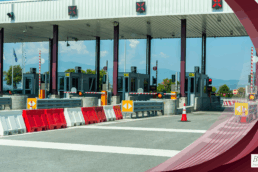The U.S. Department of State recently updated its Global Visa Wait Times page, introducing a more detailed and transparent view of the wait times for nonimmigrant visa interviews. These updates, alongside a narrowing of interview waiver eligibility, represent significant changes that could affect how and when applicants pursue travel to the United States.
What’s New About Visa Wait Time Reporting?
As of April 25, 2025, the State Department now provides two key pieces of information for each consular post.
- The average wait time column for visitor visa appointments reflects how long applicants have waited over the last 30 days for B-1 or B-2 visitor visas
- The next available appointment column shows the estimated time until the next open interview slot
The dual approach gives applicants a more comprehensive understanding of the backlog and helps them plan accordingly, particularly valuable for students, tourists, and business travelers with specific timeframes. The grid has an option to organize posts based on appointment availability, making it easier for applicants to assess their options for the soonest available appointment in a given category.
Interview Waiver Eligibility Has Narrowed
In a major policy change effective February 18, 2025, the Department of State revised the criteria for interview waivers. Previously applicants could qualify for a waiver if their previous visa expired within 48 months. Now, that window has been reduced to just 12 months.
This change means that many more applicants, including frequent travelers and returning students, must now schedule in-person interviews. The unfortunate result of this is longer wait times at consulates already facing high demand.
Wait Times Vary Widely by Location
Consular wait times remain inconsistent across the globe.
- In Chennai, India, the wait for a B-1/B-2 (tourist/business) visa interview exceeds 13 months
- In contrast, applicants in Amman, Jordan may wait only 30 days for the same category
Such regional disparities can influence where applicants choose to apply, and underscore the need for strategic planning, especially for those with flexibility on consulate location.
Why These Changes Matter
Longer and less predictable visa wait times have broad implications that will affect many different types of people.
- Students may face delays in beginning or returning to their academic programs.
- Employers could encounter difficulties scheduling international business travel.
- Families may be kept apart longer due to scheduling constraints.
- Legal professionals must account for these extended timelines when advising clients on visa renewals, international travel, or consular processing.
Understanding these changes is vital not only for immigrants and visa applicants, but also for attorneys who guide them through the complex U.S. immigration system.
How We Can Help
At Berardi Immigration Law, we stay on top of immigration policy changes. If you are affected by extended wait times or recent waiver changes, we can help assess options and develop a strategy that fits your goals. Contact us today to speak with an experienced professional from our team.
Ready to have Berardi on your side?
Whether you’re a business looking to hire or a professional hoping to relocate, immigration law can be complicated. But you don’t have to do it alone. Put our experience to work for you.


